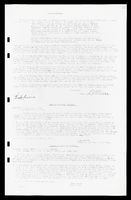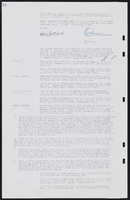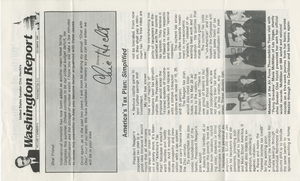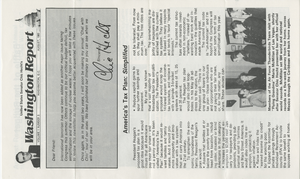Search the Special Collections and Archives Portal
Search Results
Thomas, Sonny
Sandy C. Thomas is better known as Sonny. Sonny Thomas was born in Fordyce, Arkansas on Feburary 6, 1940. In 1959, Sonny arrived in Las Vegas looking for the promised employment opportunities. His first job was as a bus boy at El Rancho. Over the course of the next thirty years, he moved from one job to another, each time gaining more responsibility. His last hotel role was as shipping and receiving manager at the MGM. While working at the MGM, Sonny finally secured a part-time second job with Davis Funeral Home.
Person
Hyman, Stanley
Stanley Hyman (1925-1999) was a district manager at Farmers Insurance and a Navy veteran who lived in Las Vegas, Nevada from 1951 until his death in 1999. Hyman was born August 26, 1925, in San Francisco, California. During World War II he served in the U.S. Navy in the South Pacific from 1944 to 1946. Hyman moved to Las Vegas in May 1951 and was active in the local community. He was a member of the Lions Club and the Chamber of Commerce, and chaired several United Fund drives.
Person

Report, Description of flood control problems of the Meadow Valley Wash and Muddy River Water sheds - Clark and Lincoln Counties, Nevada, circa 1940
Date
Archival Collection
Description
List of flood control features in the Meadow Valley Wash and the Muddy River Watershed.
Text

Las Vegas and Tonopah Railroad Blueprints
Identifier
Abstract
The Las Vegas and Tonopah Railroad Blueprints consists of twenty-four of the original thirty blueprints as part of the Interstate Commerce Commission (I.C.C.) Valuation Index Section I. They are labeled "Right-of-Way & Track Map, Las Vegas & Tonopah Railroad" and dated June 30, 1915. The blueprints contain four miles of railroad lines per sheet with a scale of 6 3/4 inches per mile. The collection also includes one sheet from the Bullfrog Goldfield Railroad company, which used the track, yard, and facilities of the Las Vegas and Tonopah and Railroad company between Beatty and Goldfield, Nevada.
Archival Collection
Professional activities files, 1980-2015
Level of Description
Scope and Contents
The professional activities files include materials collected by anthropologist Katherine Spilde during her employment with the National Gambling Impact Study Commission (NGISC), the National Indian Gaming Association (NIGA), and the Harvard Project on American Indian Economic Development (HPAIED). The materials date from 1980 to 2005, with the bulk of materials dating from 1995 to 2005. The materials document the institutional research of NGISC, NIGA, and HPAIED as well as the legal and regulatory history of Native American gaming in the United States. Also included to a lesser extent are materials from her work with the National Congress of American Indians (NCAI) and Bureau of Indian Affairs (BIA) Data Management, Needs Assessment, and Auditing Workgroup; the National Indian Gaming Association (NIGA) and the National Congress of American Indians (NCAI) Joint Task Force; and the National Council on Problem Gambling. The series contains research and subject files created by Dr. Spilde during her employment with various agencies of the federal government and universities. The series includes socioeconomic reports, testimonies, correspondence, memos, press releases, audiovisual materials, promotional materials, pamphlets, brochures, booklets, journal articles, legal briefs, legislative documents, notes, presentations, conference materials, and newspaper articles.
Archival Collection
Collection Name: Katherine A. Spilde Papers on Native American Gaming
Box/Folder: N/A
Archival Component




